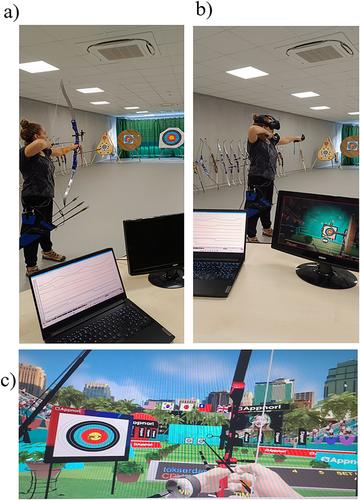This study examines the psychophysiological differences between virtual reality (VR) and real archery. It explores whether VR archery induces heart rate (HR), heart rate variability (HRV), and breathing rates similar to those experienced in real archery. Additionally, the study assesses differences in perceived anxiety, difficulty, confidence, rate of perceived exertion (RPE), and shooting performance between the two modalities, providing insights into the efficacy of VR as a training tool for archery.
Twenty-two (women: 8) individuals aged 20–24 participated in the study. We first recorded individuals’ resting HR, HRV, and breathing rates during baseline. Afterward, participants shot 10 real and virtual arrows from 18 m, whereas their HR, HRV, and breathing rate were measured, each lasting 4 min. Performance in VR and real archery was determined separately as the sum of the shots. We performed paired sample t-tests to compare individuals’ performance, psychological, and psychophysiological responses recorded during VR and real arrow shooting. Afterward, we compared percentage changes between VR and real archery.
Results showed that HR and root mean square of successive differences (RMMSD) were significantly higher during real archery compared to virtual archery. In addition, VR archery led to a greater percentage change in RMSSD compared to real archery. Participants reported greater RPE and perceived difficulty after real archery. Performance was also higher during VR archery than real archery.
Consequently, the results of the present study illustrated that VR, and real archery might lead to different autonomic response patterns in terms of vagal activity.



